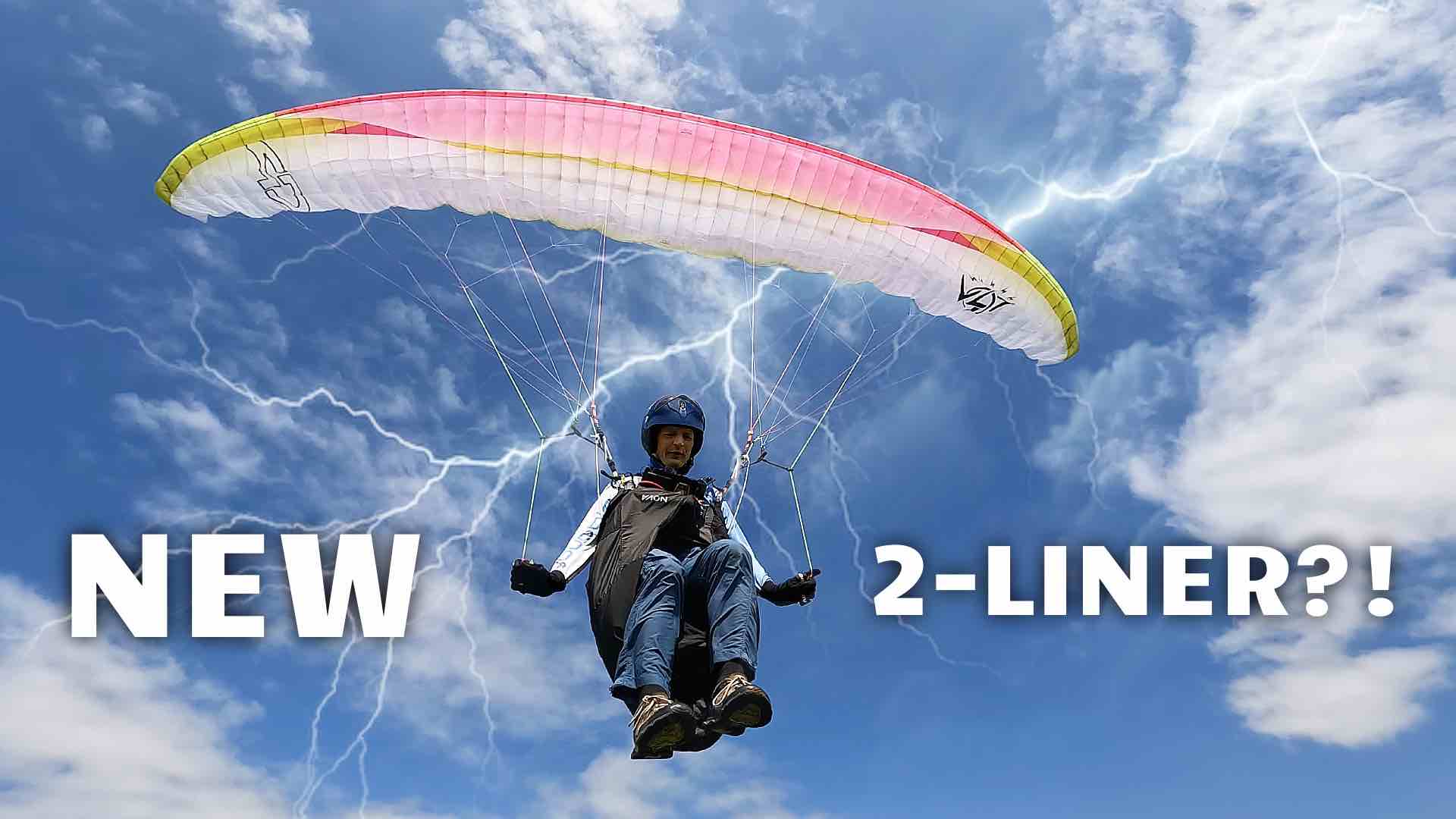
The AirDesign Volt 5 replaces the original Volt 4, which was the first-ever EN C 2-liner, and AirDesign now becomes the first brand to release a second edition in this category. After testing the Volt 5 over several days in various conditions, I’ve gathered my initial impressions, and there’s a lot to appreciate about this glider.
Build Quality & Design
AirDesign continues to impress with its craftsmanship. The Volt 5 is no exception—it's meticulously constructed, lightweight, yet feels robust and built to last. Despite its compact and light nature, the glider conveys durability, making it suitable for both serious XC pilots and those who value lightweight gear. However, as with any lightweight glider, careful packing is essential. AirDesign supplies a 50/50 concertina bag, which helps keep the rods straight and ensures long-term performance. In harsher terrains where durability is paramount, a heavier model may be more suitable, but for alpine or UK flying, the Volt 5's combination of light weight and compactness is a standout feature.
Risers & Lines
The Volt 5 comes with 12mm webbing risers, which are likely Kevlar-reinforced. These risers strike a great balance between functionality and simplicity. They are comfortable to handle and provide the performance needed without excessive complexity. The glider's lines are fully unsheathed, except for the brake lines, aligning with the expectations of a glider in this class. The lines, along with the risers, contribute to smooth inflation. The glider rises progressively and predictably, making it easy to control during launch—even in challenging conditions.
Handling & Control
One of the key improvements over the Volt 4 is the brake pressure and stall point. The brakes firm up more predictably, without feeling heavy, and give a clear indication of when you're approaching the stall. This was a minor issue we had with the Volt 4, where the stall point was a little vague. The Volt 5 now strikes the perfect balance: the stall point is obvious both on the ground and in the air, making it less likely for pilots to accidentally stall or spin the glider.
Even in lighter conditions, the glider sits nicely above your head and lifts off smoothly. The takeoff is easy, even in tricky spots. The brakes are a bit on the long side—not slow, but not short either. When flying, I find that a half-wrap is the ideal brake position for general handling. The glider feels cohesive and solid in flight, not snaking around like some others might. Its aspect ratio is slightly lower than its predecessor’s, but we feel this improves the connection with the rear risers, giving you more control and feedback. The pressure is moderate—slightly firmer, but not heavy—giving a good connection to the glider.
Performance & Feedback
In stronger, choppier conditions, I felt very comfortable using the bar and rear risers. The system isn’t the lightest, but it works well, and there’s good feedback. In terms of agility, the Volt 5 feels a little more precise and responsive than the Volt 4. It turns a bit tighter, though it still has that flat turning characteristic, which helps it climb really well, even in weak conditions. In stronger conditions, loading the glider up helps with handling.
The feedback is moderate. It’s not overly communicative, but it’s not too dampened either. I’d say it’s slightly on the dampened side, meaning it gives you enough information without overwhelming you in rough air. The trim speed is competitive with other mid- to high-end C gliders, and its glide has improved over the Volt 4. Accelerated, it picks up speed quickly, and the glider feels solid throughout, making the speed bar very usable. In fact, it feels like AirDesign could have pushed the speed bar even further if they’d wanted to.
Descent & Landing
Classic big ears are easy to execute and stable, using the outer A-lines. They pop out effortlessly when released. Tip stalls take a bit more effort, but they’re effective as long as the pilot pulls evenly. During landing, I experienced a 30% collapse in strong, choppy conditions due to a thermal. The glider recovered instantly, with no drama, which speaks to its inherent stability.
Pilot Demands & Comparisons
The Volt 5 feels like it belongs in the mid-C category. While the pilot demands are still slightly higher than that, they’re lower than on the Volt 4. A pilot accustomed to a mid-C 3-liner or 2.5-liner will feel very comfortable upgrading to the Volt 5, with noticeable improvements in performance and the benefits of a 2-liner.
Descent techniques are effective. Like the Volt 4, it does classic big ears with the outer A’s, which are stable and easy to manage. They pop out cleanly when you release them. Tip stalls, as with most gliders, require a bit of effort but are effective. Just be sure to pull them in evenly to avoid turning.
In terms of pilot demands, I’d compare the Volt 5 to the Bonanza 3, though the Volt 5 stands out with superior performance, glide, and speed. While the Nova Codex may be more forgiving with lower pilot demands, the Volt 5 strikes a balance—offering greater performance without becoming overly demanding. Despite being a 2-liner, it remains very accessible to pilots transitioning into this class.
Final Thoughts
Though the Volt 5 may not be the most agile glider in its category, it surpasses its predecessor in handling and responsiveness. It’s an ideal choice for pilots stepping up to their first 2-liner, particularly those coming from high-B or sports class wings. The Volt 5’s versatility makes it a strong contender for those seeking a capable all-rounder, perfect for cross-country flying, hike-and-fly, and vol-biv adventures, thanks to its lightweight and compact design.
Flybubble video review
Brought to you by Flybubble
Like what we do? The best way to thank and support us is to buy gear from us and recommend us to others
